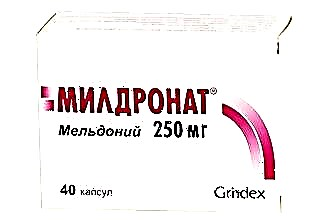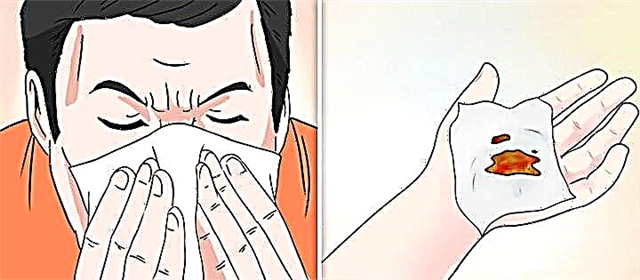Streptococcus is perhaps one of the best known bacteria. Many have heard about the danger of this microorganism, its ability to cause serious illness and give serious complications to the kidneys, heart and joints. That is why the diagnosis of "hemolytic streptococcus in the throat" sounds daunting. Is streptococcus really that dangerous? What is the difference between hemolytic streptococcus and non-hemolytic? What is Streptococcus Greens? If you want to know the answers to these questions, this article is for you.
Streptococcus is a genus of bacteria that unites many species, which differ in pathogenicity for humans, drug resistance, biochemical and genetic characteristics. Moreover, they are all parasites that can exist in the throat, nasal cavity, lower respiratory tract and gastrointestinal tract. Let's talk in more detail about the types of streptococci and their danger.
Streptococcus - features of the microorganism
 Streptococci, like other cocci bacteria, have spherical cells. They multiply by simply dividing in two.
Streptococci, like other cocci bacteria, have spherical cells. They multiply by simply dividing in two.
Streptococcus is a bacterium that constantly circulates in human populations. This microorganism can persist for a long time in the air, drops of liquid, but it feels best inside the human body. The optimal temperature for its reproduction is in the range of 35-37 ° C, which corresponds to the thermometry indicators of a healthy (as well as slightly sick) person.
At temperatures above 38 ° C, the vital activity of streptococcus is inhibited, but it can survive when the temperature rises up to 60 ° C.
Streptococcus can be stored for a long time in dried pus and viscous sputum that covers the mucous membrane of the respiratory tract. Thanks to this, streptococcus can cause chronic infections.
The spread of infection occurs when a healthy person comes into contact with a sick person - when talking, kissing, etc. This transmission route is called airborne. It has been established that the bacterium can also be transmitted by the alimetric (food) and contact-household routes (when using common utensils, towels, etc.).
Strep infection can cause throat problems such as:
- banal sore throat;
- chronic tonsillitis;
- scarlet fever;
- acute or chronic pharyngitis.
Classification of streptococci. What are they like?
The generally accepted classification of streptococci is based on the characteristics of the growth of these bacteria in culture (i.e. in laboratory conditions). Streptococcus is grown on a special nutrient medium - blood agar. Among other components, blood agar contains red blood cells - red blood cells.

Depending on whether streptococcus destroys red blood cells, the following groups are distinguished:
- Alpha hemolytic streptococci. Representatives of this group destroy blood cells, causing the oxidation of hemoglobin. When oxidized, hemoglobin turns green, so alpha-hemolytic streptococcus is often called "greening". The most common representative of green streptococci is Streptococcus viridans. It is present in large quantities on the skin, mucous membranes of the mouth, respiratory tract, genitals. This microorganism is a representative of the normal microflora. For a healthy person, Streptococcus viridans is not dangerous, but with a decrease in immunity, it can cause inflammation.
Alpha hemolytic streptococci often cause bacterial complications from colds and flu. In particular, they can provoke a bacterial complication of viral tonsillitis or pharyngitis.
In rare cases, alpha-hemolytic streptococcus causes heart complications.
It is the representatives of GABHS that can cause acute and chronic tonsillitis, pharyngitis, scarlet fever.
- Beta-hemolytic streptococci. When grown on blood agar, cause hemolysis (i.e. destruction of red blood cells). It is beta-hemolytic streptococci that are most dangerous to humans. Beta-hemolytic streptococci in the throat cause acute inflammation, which is accompanied by a violent immune response. Within this group, 20 serogroups are distinguished (indicated by the letters of the Latin alphabet, from A to O), depending on the biochemical characteristics of the bacteria. Serogroups A and B are of greatest medical importance:
- Group A beta-hemolytic streptococcus (in medicine, the abbreviation GABHS is often used) is the causative agent of most streptococcal diseases.
- Group B beta-hemolytic streptococcus (BGSV) - can be found on the skin and mucous membranes of healthy people. With a decrease in immunity, this microorganism can provoke the development of inflammation of the lungs, kidneys, intestines, and brain. BGSV is especially dangerous for pregnant women.
- Gamma-hemolytic streptococci. Do not cause destruction of red blood cells when grown in culture. Representatives of this group live in the oral cavity and intestines. Normally, they are not capable of harming the body.
To determine exactly which streptococcus caused the throat disease, it is necessary to take a throat swab test. A laboratory doctor, growing bacteria on blood agar, will determine whether streptococci are present in the throat, and to which groups they belong. If a more accurate determination (up to the species) is required, it is recommended to pass a PCR analysis of sputum, based on the determination of the DNA of the microorganism.
Strep throat
Common throat conditions that are caused by streptococcal infections are sore throat, pharyngitis, and scarlet fever.
Interestingly, streptococcal infection, primarily GABHS, often affects the palatine glands and pharynx at the same time, causing tonsillopharyngitis.
Tonsillopharyngitis is a highly contagious disease. Its first symptoms appear 24-48 hours after contact with the carrier of the infection. There is a particularly high likelihood of transmission from a person with acute tonsillitis.
The onset of the disease is acute, sudden. The body temperature rises sharply to 38-39 ° C (children may have higher rates). The patient suffers from headache, nausea, severe weakness. Children often have vomiting, indigestion, and abdominal pain. The reason for this is intoxication. The lymph nodes in the neck become enlarged, and feeling them causes pain.

One of the most striking symptoms of tonsillopharyngitis is a sore throat. It bothers the patient almost constantly, increases with swallowing, talking, coughing, etc.
When examining the throat, there is a noticeable increase in the tonsils, redness of the pharynx (tonsils, soft palate, pharynx). The surface of the mucous membrane is bumpy, swollen. A purulent plaque is usually present on the tonsils. When you try to remove it, it easily moves without causing bleeding (unlike diphtheria). The difference from scarlet fever is the absence of any rashes on the skin and oral mucosa.
Symptoms peak on day 2 of illness, then gradually decline (with proper treatment). The disease goes away within 5-10 days. Lymph nodes may take a little longer to recover (up to 14 days).
Streptococcal tonsillopharyngitis tends to become chronic. In this case, there is a periodic exacerbation of tonsillitis and pharyngitis.
What is the danger of streptococcal infections?
The main thing that you need to know about streptococcal infection is that it can cause the development of severe complications. First of all, this concerns GABHS - the most common and dangerous pathogen.
Strep throat diseases such as sore throat and pharyngitis can be cured in a week.If you start the disease, complications begin to develop - rheumatoid arthritis, glomerulonephritis, etc.
Such complications have to be treated for years. That is why the question of the correct treatment of staphylococcal infections requires special attention.
Therapy of streptococcal infections, including tonsillopharyngitis, without fail includes the use of antibacterial drugs of systemic action (antibiotics in the form of tablets or injections). Withdrawal from antibiotic therapy significantly increases the likelihood of complications, which has been proven by numerous medical studies. Of course, not everyone develops complications, but the risk is not worth it. When the minor side effects of antibiotics are on one side of the scale and the dire consequences of avoiding them are on the other, the choice is clear.
We list the complications that GABHS can cause:
- acute rheumatic fever;
- rheumatic heart disease that affects the valves and wall of the heart;
- post-streptococcal glomerulonephritis, manifested in inflammation of the renal glomeruli;
- rheumatoid arthritis (joint inflammation).

Such complications usually develop 2-3 weeks after recovery. All of the above diseases significantly reduce the quality of life and are difficult to treat.
How and why do post-streptococcal complications develop? The first mechanism is exposure to toxins released by bacteria. Streptococcal toxins are especially harmful to the heart. The second mechanism is more complex. The fact is that the proteins of the cell wall of streptococcus in their structure resemble some proteins of the human body, which are part of the heart muscle, heart valves, renal pelvis, articular surfaces. If streptococcus remains in the body for too long (for example, with chronic tonsillitis, lingering pharyngitis), the immune system begins to actively destroy everything that resembles a streptococcus cell in structure. As a result, the antibodies produced destroy not only the harmful bacteria, but also the body's own cells.
Thus, streptococcal infection is able to trigger autoimmune reactions in the body.
Treating strep throat infection
The mainstay of treatment for streptococcal infections caused by GABHS is antibiotics. Timely intake of antibiotics not only leads to the rapid disappearance of the symptoms of the disease, but also prevents the development of complications, including rheumatic ones.
BHSA is highly sensitive to penicillins, cephalosporins and macrolides. The drugs of first choice are penicillins. The drugs Phenoxymethyl-penicillin and Amoxicillin are taken three times a day, 500 mg each (i.e. 1.5 g per day). Check the dosage with your doctor. It can vary depending on the age of the patient and the severity of the infection. If you are intolerant to penicillin, your doctor may prescribe macrolides - erythromycin, azithromycin, clarithromycin. Treatment regimens with these drugs are prescribed individually.
The drugs gentamicin, tetracycline and kanamycin are ineffective against the beta-hemolytic streptococcus of group A. It is inappropriate to prescribe them for angina.
The standard course of treatment for streptococcal infection is 10 days. The exception is azithromycin (the course of treatment with this drug is 5 days). In this case, an improvement is observed already on the 2nd day of treatment. It is important not to stop treatment at this point. To completely destroy the focus of infection, you must completely complete the course.
2 weeks after recovery, it is recommended to pass bacteriological tests, confirming the absence of streptococcal infection in the body.



